Mysteries of the Middle Ages Art Gallery
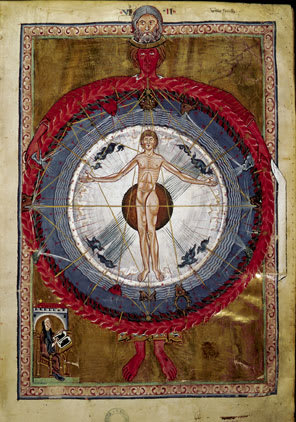
Photo credit: Scala / Art Resource, NY
Man at the center of the cosmos with Hildegard as observer (in lower left corner): a Hildegardian mandala. Leonardo da Vinci’s later nude figure, the so-called Vitruvian Man, his arms extended within a circle, is in the same tradition, but Hildegard’s figure, lacking visible genitals, is the nonsexist homo of her writings.
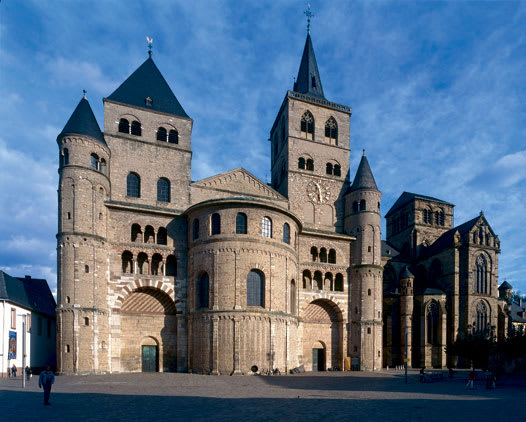
Photo credit: akg-images / Schütze / Rodemann
Twelfth-century late Romanesque dom (or cathedral) of Trier, its foundations laid by the Emperor Constantine in the fourth century. Hildegard preached here to capacity crowds. Next door (on the right) is a graceful early Gothic church dedicated to the Virgin Mary.
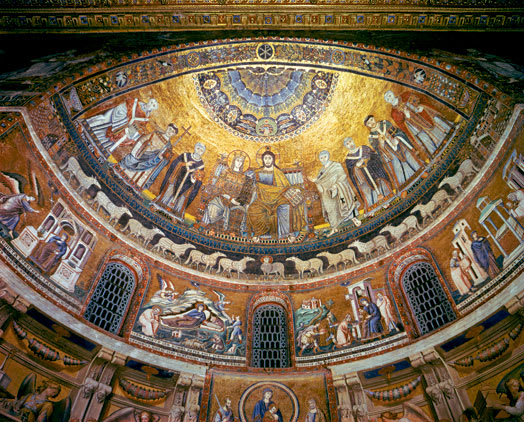
Photo credit: Marka / age fotostock
Apse of Santa Maria in Trastevere. The mosaic of Christ and the Virgin, enthroned beneath the hand of God and flanked by saints, was made about 1140. The mosaics lower down between the windows illustrate the life of the Virgin Mary. They were made in the late thirteenth century by the extraordinary medieval artist Pietro Cavallini.

Photo credit: Scala / Art Resource, NY
Apse of Santa Maria in Trastevere (close-up).

Photo credit: Courtesy Achim Bednorz
Cathedral of Notre-Dame, rising above the town of Chartres and called by the art historian Emile Male “the mind of the Middle Ages manifest.” The body of the cathedral was built in the late twelfth and early thirteenth centuries and contains the Virgin’s Veil, a celebrated relic.

Photo credit: © François Guénet
God affectionately and with great care, fashioning Adam from clay. A twelfth-century sculpture from the north portal of Notre-Dame de Chartres.

Photo credit: Courtesy Achim Bednorz
Gently elongated prophetic figures — from the left, Isaiah, Jeremiah, Simeon, John the Baptist, and Simon Peter — from the north portal of Chartres Cathedral. The first four are shown as prophets of the Incarnation. Peter, as the first priest of the new order, is dressed as a medieval pope.

Photo credit: © François Guénet
Noah’s Ark, symbol of the church surviving through time despite calamities and guided by the dove (or the Spirit of God). Scenes below the Ark are of people lost in the Flood, meant to remind the viewer of the consequences of the Last Judgment. From Chartres Cathedral.
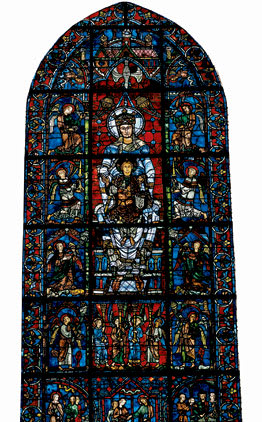
Photo credit: The Art Archive / Dagli Orti
Twelfth-century masterpiece, Notre-Dame de la Belle-Verrière (Our Lady of the Beautiful Stained Glass), Chartres Cathedral.
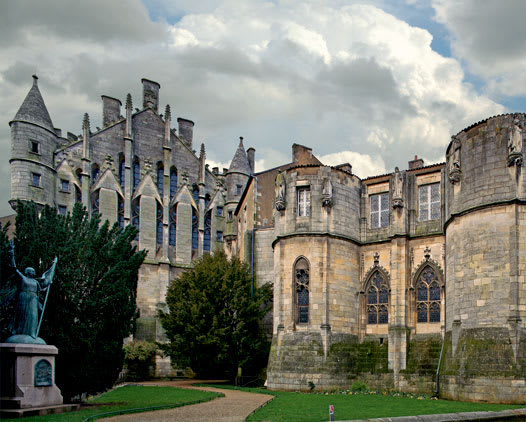
Photo credit: Courtesy Achim Bednorz
Eleanor’s palace at Poitiers. The Maubergeonne Tower to the right, built by Eleanor’s grandfather, housed his mistress Dangerosa.
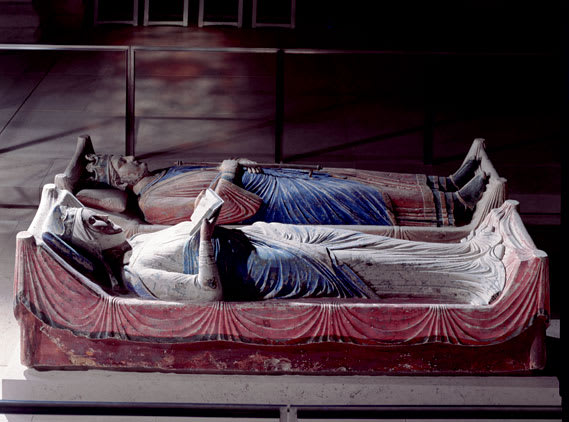
Photo credit: akg-images / Amelot
Eleanor’s tomb in Fontevraud Abbey, next to that of her second husband, King Henry II. Taller than Henry, Eleanor was the genetic source of their son Richard’s great height.
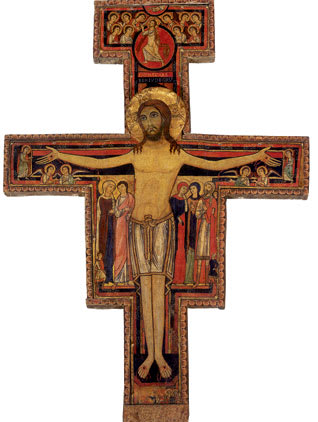
Photo credit: Scala / Art Resource, NY
Crucifix of San Damiano that spoke to Francis. Like the apse of Santa Maria in Trastevere, it is an example of the new tenderness introduced by Italian artists of the twelfth century into their tradition of Byzantine-inspired art.
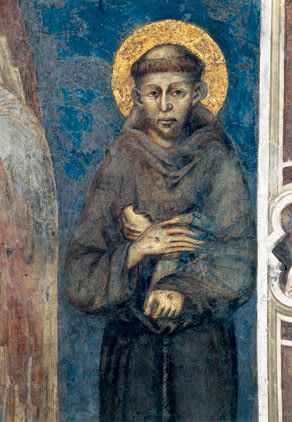
Photo credit: Scala / Art Resource, NY
Saint Francis by Cimabue, almost certainly a likeness. The stigmata, or wounds of Christ in his Passion, are shown on the saint’s body, but, despite pious legend, it is unlikely that he was so afflicted. The bald circlet on the top of his head is his tonsure, which all clerics had to submit to. Francis did not wish to be made a cleric, but Innocent III insisted on it and personally tonsured Francis.
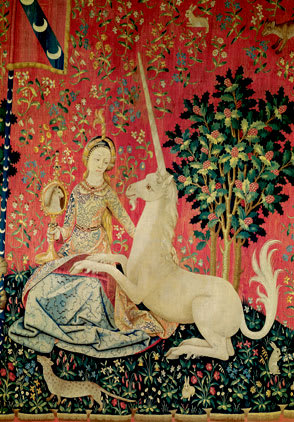
Photo credit: Musee National du Moyen Age et des Thermes de Cluny, Paris / Bridgeman Art Library
The unicorn, a symbol of Christ, about to lay his head in the lap of a virgin. The holly tree behind the unicorn is also a symbol of Christ. From a fifteenth-century French tapestry.
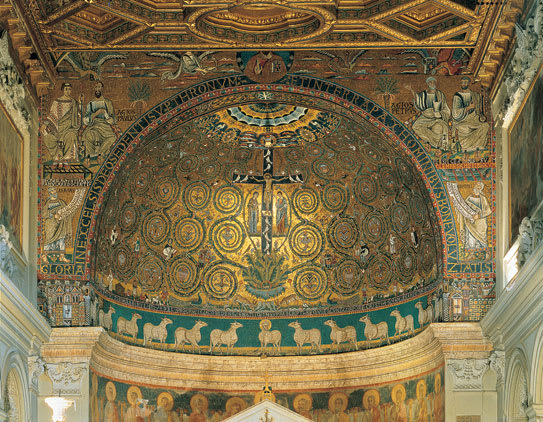
Photo credit: Index S.A.S.
The twelfth-century apse of San Clemente, Rome.
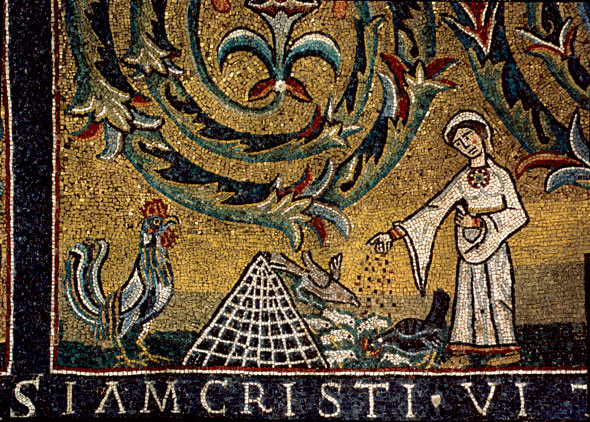
Photo credit: Index S.A.S.
Detail of San Clemente apse: a women feeding her hens.
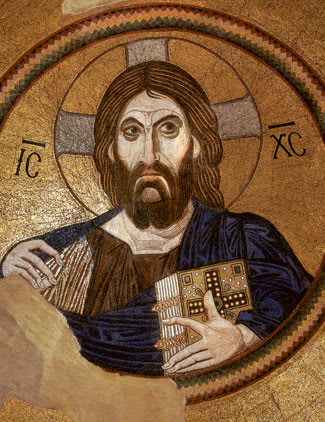
Photo credit: The Art Archive / Dagli Orti
Jesus as Pantocrator (All-Ruler), in an eleventh-century Greek mosaic that dominates the ceiling of the monastery church at Daphni.

Photo credit: Erich Lessing / Art Resource, NY
Francis of Assisi’s first presepio or crèche. Fresco by Giotto in the basilica at Assisi. Note the reduced size of ox and ass, meant perhaps to minimize their importance in this scene.
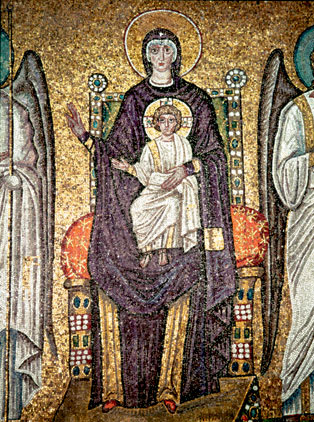
Photo credit: Giraudon / Bridgeman Art Library
Sixth-century Byzantine Virgin and Child in the Church of Sant’Apollinare Nuovo, Ravenna.

Photo credit: Scala / Art Resource, NY
Cimabue’s Madonna and Child with Angels and Prophets, painted c. 1260 for the Church of the Trinity, Florence, and now in the Uffizi Gallery.
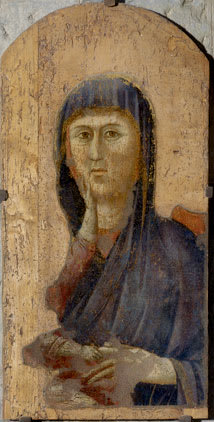
Photo credit: Index S.A.S.
Giotto’s wryly realistic Madonna of Borgo San Lorenzo.
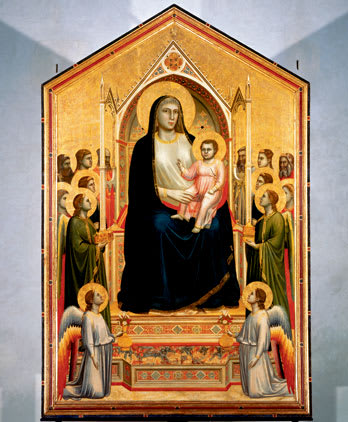
Photo credit: Scala / Art Resource, NY
Giotto’s Ognissanti Madonna (Madonna of All Saints), now in the Uffizi.

Photo credit: Erich Lessing / Art Resource, NY
Thirteenth-century Greek Crucifixion.
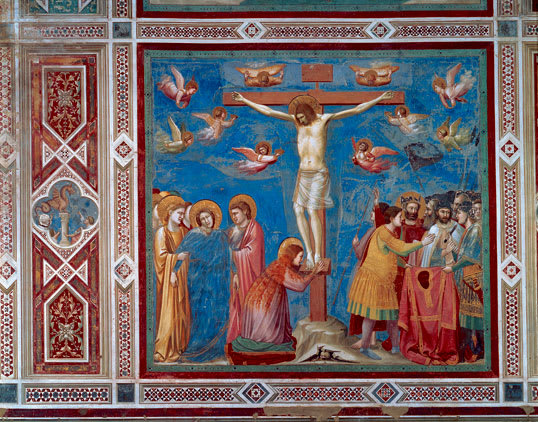
Photo credit: Scala / Art Resource, NY
Giotto’s Crucifixion in the Scrovegni Chapel, Padua.

Photo credit: The Art Archive / San Francesco Assisi / Dagli Orti (A)
Renunciation of Worldly Goods by Giotto, Basilica of Saint Francis, Assisi.

Photo credit: Scala / Art Resource, NY
Exorcism of the Demons of Arezzo by Giotto, Basilica of Saint Francis.

Photo credit: Scala / Art Resource, NY
Saint Francis Mourned by Saint Clare by Giotto, Basilica of Saint Francis.
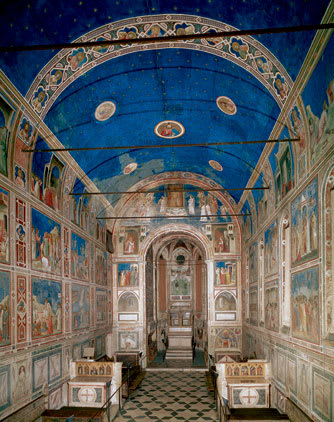
Photo credit: Scala / Art Resource, NY
Interior of Scrovegni Chapel, Padua, with frescoes painted by Giotto.
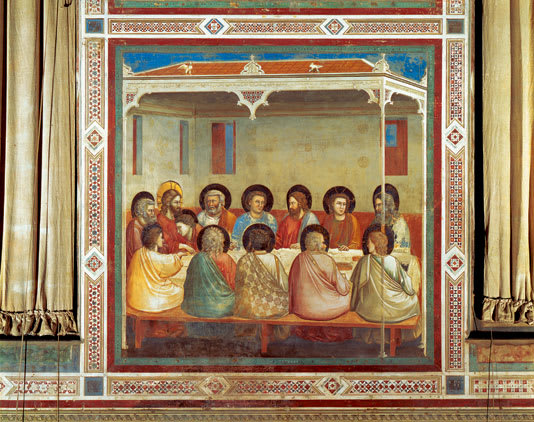
Photo credit: Scala / Art Resource, NY
Last Supper, Scrovegni Chapel.
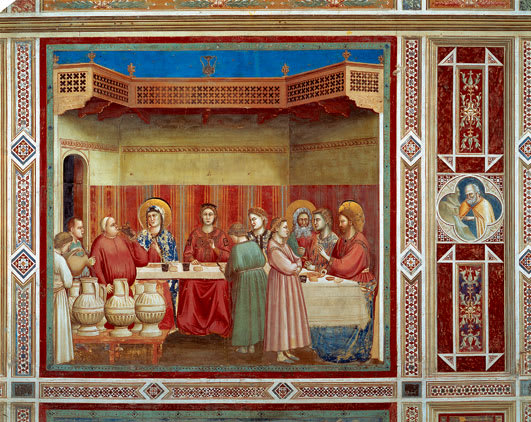
Photo credit: Scala / Art Resource, NY
Marriage Feast at Cana, Scrovegni Chapel.

Photo credit: Courtesy Achim Bednorz
Cathedral of Santa Maria del Fiore, in Florence, surmounted by Brunelleschi’s dome; to the right is the Campanile, designed by Giotto.
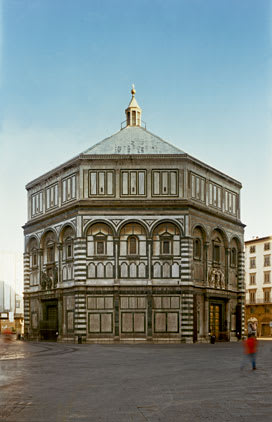
Photo credit: Courtesy Achim Bednorz
Baptistery of San Giovanni, Florence.
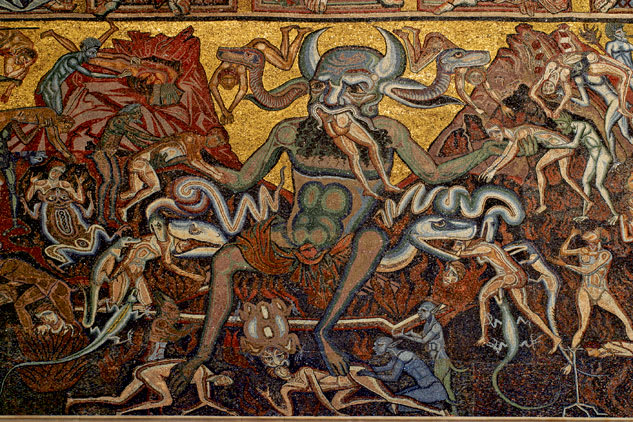
Photo credit: © Alessandro Chiarini / Alamy
Mosaic of Satan in Hell, Baptistery of San Giovanni, Florence.
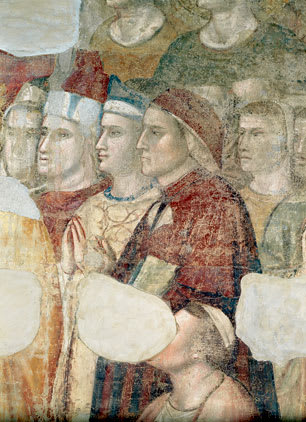
Photo credit: Museo Nazionale del Bargello, Florence, Italy / Bridgeman Art Library
Dante in red in a fresco in the chapel of the Bargello, Florence.
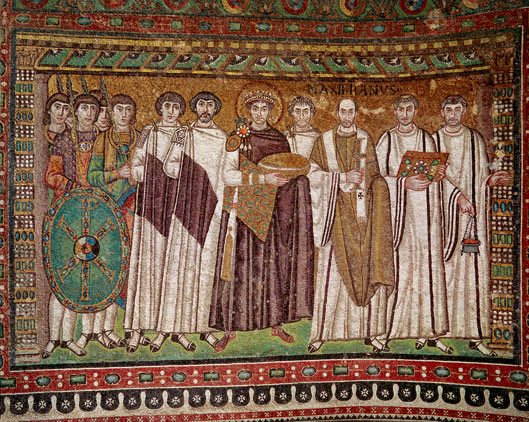
Photo credit: Scala / Art Resource, NY
Sixth-century mosaic frieze of the emperor Justinian and his court, San Vitale, Ravenna.
